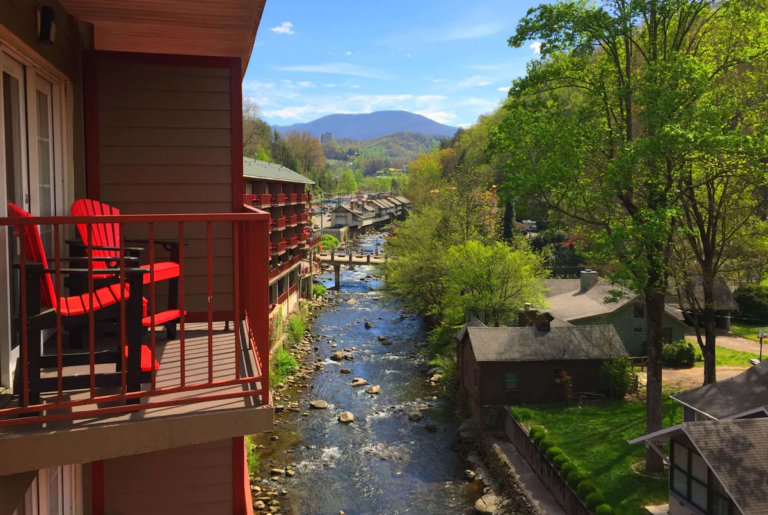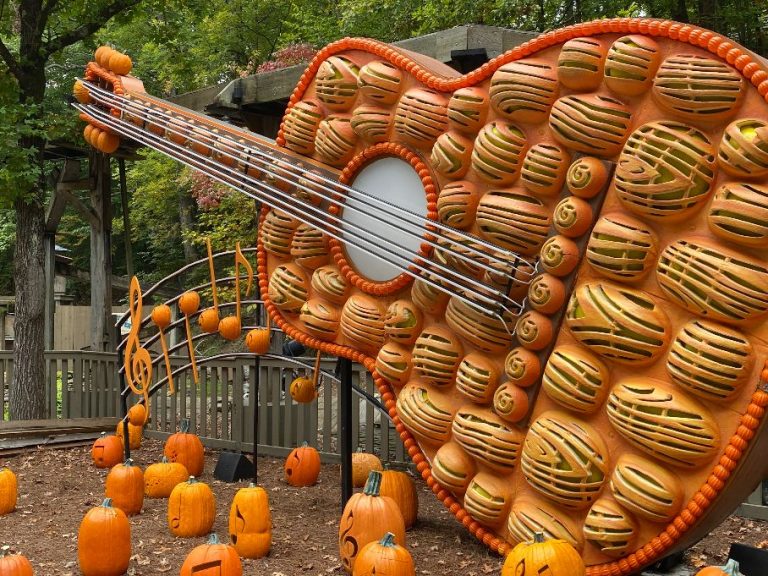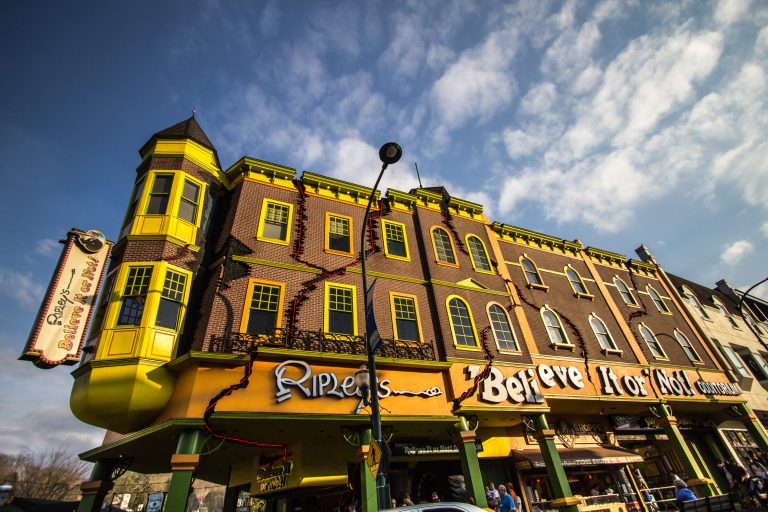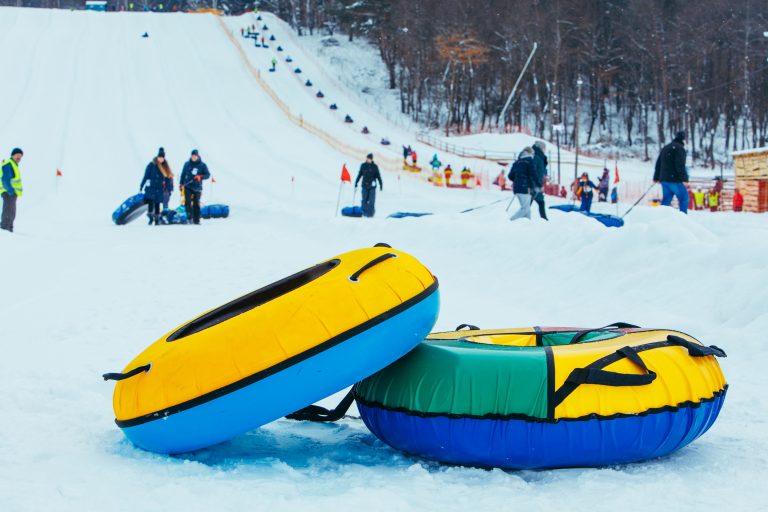Lil Travel Folks is supported by its readers. If you purchase through a link on my site, I may earn a commission. Learn more
Visiting Great Smoky Mountains National Park during the winter season is a unique and unforgettable experience. The park’s natural beauty takes on a whole new dimension when covered in snow, and the lack of crowds allows you to enjoy the peacefulness of the park in solitude.
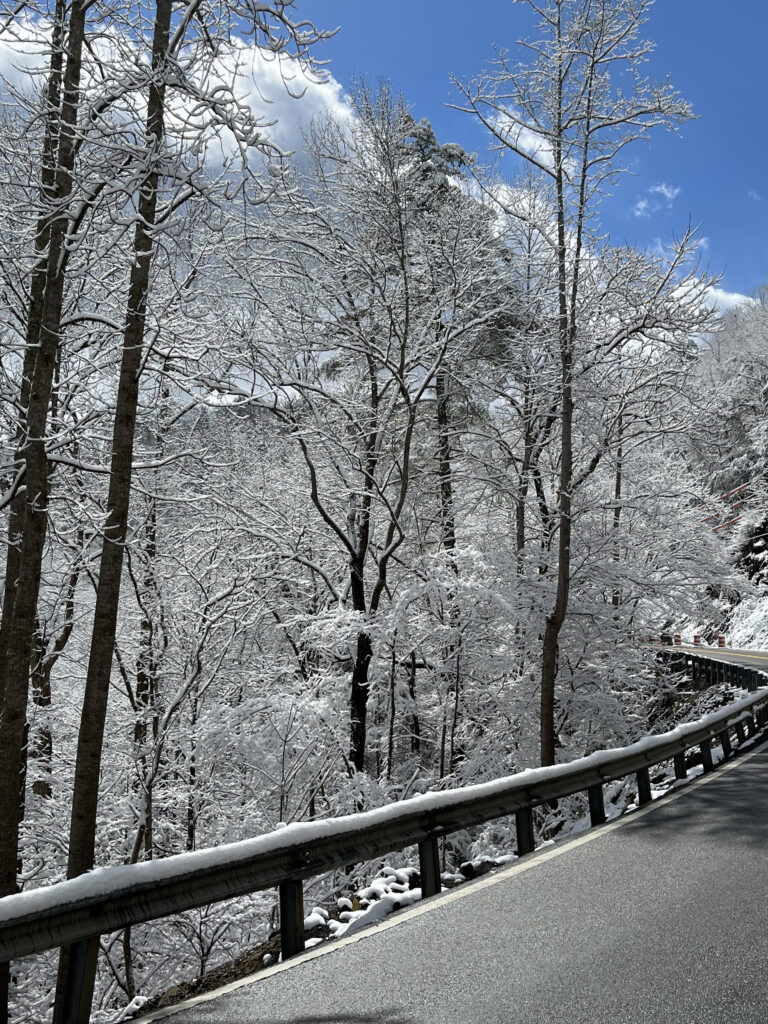
As you plan your trip to the Smokies in winter, it’s important to keep in mind the weather conditions. While the winter in the park is generally mild, extreme weather can occur in higher elevations. The average high for the season is 45°F, and the low is 22°F, so be sure to pack plenty of warm clothes and layers. Additionally, some roads may be temporarily closed due to snow and ice, so it’s best to check for road closure and weather information before visiting.
Despite the colder temperatures, there are still plenty of activities to enjoy in the park during the winter season. From hiking and snowshoeing to wildlife watching and scenic drives, there is something for everyone. Whether you’re a seasoned outdoor enthusiast or just looking for a peaceful winter getaway, Great Smoky Mountains National Park is the perfect destination for your winter adventure.
Best Time to Visit
When it comes to visiting Great Smoky Mountains National Park, the winter months can be a great time to experience the park in a unique way. However, it’s important to keep in mind that winter weather conditions can vary greatly throughout the park, so it’s important to plan accordingly.
Winter Months
The winter season in the Smokies typically runs from December through February, sometimes in to mid-March as seen above, with January being the coldest month of the year. During this time, temperatures in the higher elevations can drop into the mid-30s, and snow is possible.
If you’re looking to experience a winter wonderland, the months of January and February are your best bet. However, keep in mind that road closures due to snow can occur, especially in the higher elevations. It’s important to check the weather forecast and road conditions before heading out.
If you’re looking for smaller crowds, visiting in December (except for the week of Christmas) or early March may be a good option. While there may still be some snow on the ground, temperatures are typically milder, and many of the park’s popular attractions and trails are still open.
Overall, the best time to visit Great Smoky Mountains National Park in winter depends on your preferences and what you want to experience. Whether you’re looking for a winter wonderland or just a peaceful escape from the hustle and bustle of everyday life, the Smokies have something to offer. Just be sure to plan ahead and check the weather conditions before you go.

Road Status and Closures
If you plan to visit Great Smoky Mountains National Park during winter, it’s important to know which roads are open and which are closed. Here’s a breakdown of the current road status and closures:
Clingmans Dome Road
Clingmans Dome Road is closed to vehicles from December 1 to March 31. However, if weather conditions permit, the road may be open to pedestrians during this time.
Newfound Gap Road
Newfound Gap Road is open year-round, weather permitting. However, it’s important to note that the road can be closed temporarily due to weather conditions, such as snow or ice.
Little River Road
Little River Road is open year-round, weather permitting. However, some sections of the road may be closed temporarily due to weather conditions or maintenance work.
Cades Cove Loop Road
Cades Cove Loop Road is closed to vehicles from December 1 to February 28. However, the road is open to pedestrians and bicyclists during this time.
Roaring Fork Motor Nature Trail
Roaring Fork Motor Nature Trail is closed to vehicles from November 30 to March 31. However, the road is open to pedestrians and bicyclists during this time.
It’s important to note that there may be temporary road closures throughout the park due to weather conditions or maintenance work. To stay up-to-date on road status updates, visit the park’s website or call the park’s road information hotline at 865-436-1200, option 1.
When driving in the park during winter, make sure to check the weather forecast and road conditions before heading out. Always drive slowly and cautiously, especially on icy or snowy roads.
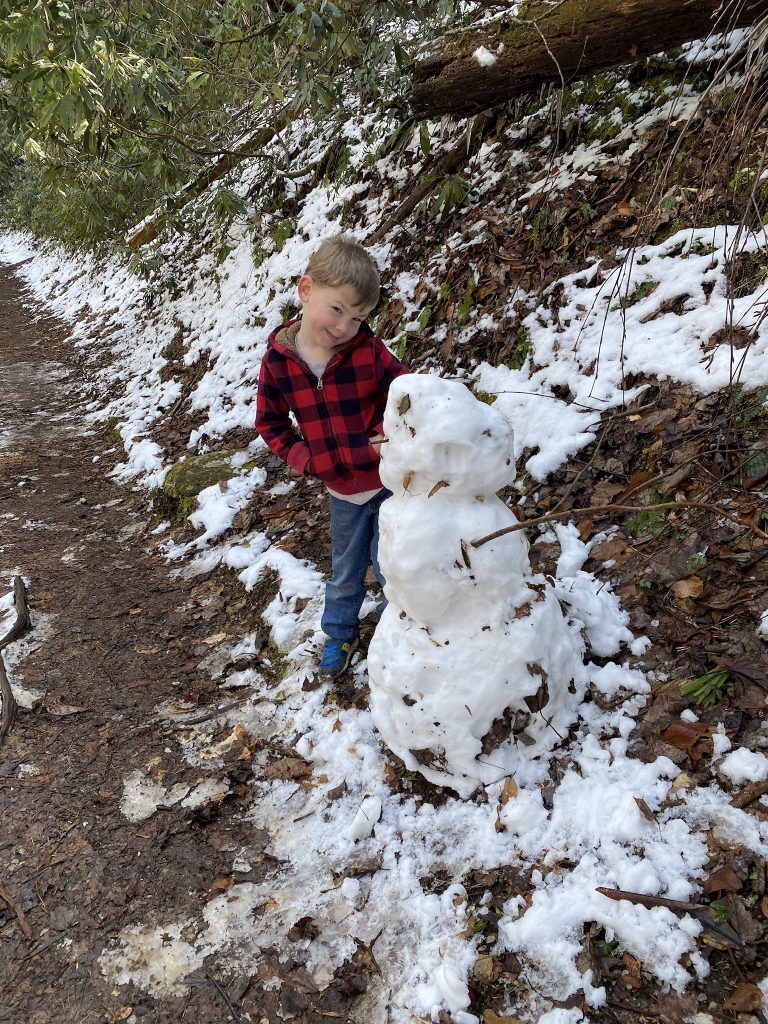
Winter Activities
When the snow falls in Great Smoky Mountains National Park, it transforms into a winter wonderland that is perfect for outdoor activities. Here are some of the best winter activities you can enjoy in the park.
Hiking Trails
Winter hiking in the park can be a great time to see the mountain peaks and breathtaking views. The Alum Cave Trail is one of the best winter hikes in the park, with icy waterfalls and the stunning Alum Cave Bluffs. Other excellent winter hiking trail options include Andrews Bald, Charlies Bunion, and Porters Creek.
Some of the park’s waterfalls are amazing in the winter months when they freeze over, and several hiking trails lead to waterfalls!
Cross-Country Skiing
If you’re looking for a more challenging winter activity, cross-country skiing is a great option. The park offers several trails that are perfect for cross-country skiing, including the Clingmans Dome Road and the Gatlinburg Trail. These trails offer a great opportunity to explore the park’s winter landscape while getting some exercise.
Snow Tubing
For a more family-friendly winter activity, check out Ober Gatlinburg’s snow tubing hill. You’ll be able to slide down the hill on a tube and enjoy the snow without having to ski or snowboard. The park also offers skiing and snowboarding for those who want to try something new.
Aerial Tramway
Ober Gatlinburg also offers an aerial tramway that takes you up the mountain to enjoy the breathtaking views from the top. This is a great way to see the park’s winter landscape from a different perspective. The tramway is open year-round, so you can enjoy the views in any season.
The Great Smoky Mountains National Park offers a variety of winter activities for visitors to enjoy. Whether you’re looking for a challenging hike or a family-friendly snow tubing experience, the park has something for everyone. So, grab your winter gear and head out to explore the park’s winter wonderland.
Sightseeing
When visiting Great Smoky Mountains National Park in winter, there are several sights that you won’t want to miss. Here are some of the top destinations to add to your itinerary:
Laurel Falls
One of the most popular hikes in the park, the Laurel Falls trail is a moderate 2.6-mile round trip that offers stunning views of the waterfall. In the winter, the falls may freeze over, creating a unique and beautiful sight.
Sugarlands Visitor Center
The Sugarlands Visitor Center is open year-round and offers a wealth of information about the park’s history and attractions. In addition to exhibits and ranger-led programs, the center also has a gift shop where you can purchase souvenirs.
Oconaluftee Visitor Center
Another great visitor center to check out is the Oconaluftee Visitor Center, located near the southern entrance to the park. Here, you can learn about the Cherokee people who once lived in the area, as well as the park’s flora and fauna.
Andrews Bald
For a more challenging hike, consider heading to Andrews Bald. This 3.5-mile round trip trail offers panoramic views of the surrounding mountains, as well as the chance to see wildlife like black bears and elk.
Porters Creek
If you’re looking for a more peaceful hike, the Porters Creek trail is a great option. This 4-mile round trip trail takes you through a beautiful forest and past historic buildings and structures, including a cantilevered barn and the remains of an old cabin.
Charlies Bunion
For a truly breathtaking view, make your way to Charlies Bunion. This 8-mile round trip hike takes you to a rocky outcropping that offers sweeping views of the park’s mountains and valleys.
Abrams Falls
Finally, don’t miss the chance to see Abrams Falls. This 5-mile round trip hike takes you to a beautiful waterfall that’s especially impressive in the winter, when it may be partially frozen.
With so many gorgeous mountain views and best waterfall hikes to explore, you’ll never run out of things to see and do in Great Smoky Mountains National Park in winter.
Accommodations
If you’re planning a winter trip to Great Smoky Mountains National Park, you’ll need to find a place to stay. Fortunately, there are plenty of options available to suit your needs and budget.
Pigeon Forge
Pigeon Forge is a popular place to stay near the national park, especially for families. There are many hotels, motels, and cabins available, as well as plenty of restaurants and attractions. If you’re looking for a place to stay with lots of amenities and activities, Pigeon Forge might be the right choice for you.
Downtown Gatlinburg
If you prefer a more rustic experience, consider staying in downtown Gatlinburg. There are many cabins and lodges available, as well as restaurants, shops, and other attractions. Downtown Gatlinburg is a good choice if you want to be close to the park and still have access to all the amenities of a small town.
Cabins with a Hot Tub
If you want to relax after a long day of hiking or skiing, consider staying in a cabin with a hot tub. Many cabins in the area offer this amenity, and it can be a great way to unwind and enjoy the beautiful scenery. Keep in mind that cabins with hot tubs tend to be more expensive than those without, so be sure to budget accordingly.
Check out the great Gatlinburg cabins here.
Overall, there are many good options for accommodations in and around Great Smoky Mountains National Park in winter. Whether you’re looking for a cozy cabin or a full-service hotel, you’re sure to find something that suits your needs. Keep in mind that winter is generally a quieter time in the park, so you may be able to find fewer visitors and enjoy a more peaceful experience.

Wildlife
When visiting Great Smoky Mountains National Park in the winter, you’ll have the opportunity to see a variety of wildlife. With the trees losing their leaves, it’s easier to spot animals that may have been hidden during the summer months.
Black Bears
One of the most iconic animals in the park is the American Black Bear. Biologists estimate that there are around 1,500 black bears living in the park. While they are active year-round, they tend to slow down during the winter months and can often be found in their dens.
Learn more about when black bears hibernate in our guide
If you’re hoping to catch a glimpse of a black bear, it’s important to remember that they are wild animals and should be treated with respect. Do not approach them or attempt to feed them. Instead, keep a safe distance and use binoculars or a camera with a zoom lens to observe them from afar.
If you do encounter a black bear, it’s important to know what to do. Stay calm and do not run. Speak in a calm voice and slowly back away, making sure to give the bear plenty of space. If the bear approaches you, make yourself look bigger by raising your arms and standing on your tiptoes. If the bear charges, use bear spray or whatever you have on hand to defend yourself.
Overall, seeing black bears in the wild can be an incredible experience. Just remember to respect their space and observe them from a safe distance.
Additional Tips
When planning a winter trip to Great Smoky Mountains National Park, there are a few additional tips to keep in mind to ensure a safe and enjoyable experience.
First and foremost, be prepared for colder weather and potentially icy conditions. It’s a good idea to wear insulated boots and dress in layers to stay warm. Check the weather information before heading out and be prepared for sudden changes in temperature.
If you’re visiting during the holiday season, you’ll have a good chance of seeing Christmas lights and other festive decorations throughout the park. Park rangers may also offer special programs and events during this time.
While higher elevations may see several feet of snow, lower elevations may only see a few snowfalls of an inch or less. If you’re looking for the best chances of seeing snow, head to the higher elevations, but be aware of road closures.
If you’re looking to avoid crowds, consider visiting the park at the end of the day or during the winter months when there are fewer visitors.
When hiking in the winter, Rainbow Falls is a great choice for a winter hike. Just be sure to check with the National Park Service or dial extension for trail conditions and closures.
Fontana Lake is a perfect place for winter fishing, and the park offers several other winter activities, such as snowshoeing and cross-country skiing. Just be sure to check for any closures or restrictions before heading out.
Final Thoughts on Visiting the Great Smoky Mountains National Park in Winter
Our family loves to visit the Smoky Mountains no matter what season it is. We’ve been plenty of times in late December and early to mid-March and it’s cold but not too cold, although it does snow some as you can see from our pictures!
Overall, visiting Great Smoky Mountains National Park in winter is a great choice for those looking for a quieter, more peaceful experience. With the right preparation and information, it can be the perfect way to enjoy the park’s natural beauty in a unique and memorable way.

